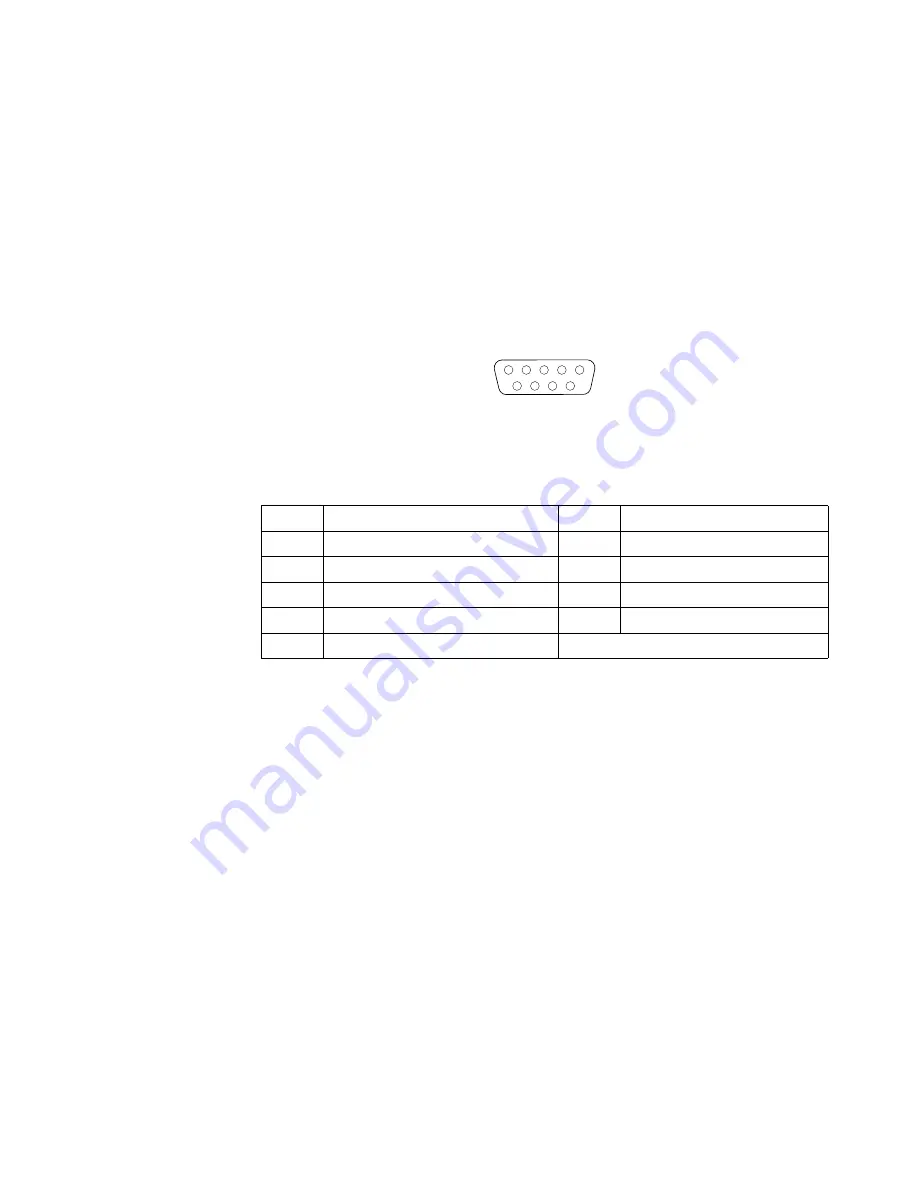
Chapter 5. Installing options
63
2.
When the message
Press F1 for Configuration/Setup
appears, press F1.
3.
From the main menu, select Devices and I/O Ports; then, press Enter.
Note:
The Devices and I/O Ports choice appears only on the full configuration
menu. If you set two levels of passwords, you must enter the
administrator password to access the full configuration menu.
4.
Select the serial port; then, use the arrow keys to advance through the settings
available.
5.
Select Save Settings; then, select Exit Setup to exit from the Configuration/Setup
Utility main menu.
Serial-port connector:
The following table shows the pin-number assignments for
the 9-pin, male D-shell serial-port connector on the rear of the server. These pin-
number assignments conform to the industry standard.
Universal Serial Bus ports
Your server has two Universal Serial Bus (USB) ports, which configure automatically.
USB is an emerging serial interface standard for telephony and multimedia devices. It
uses Plug and Play technology to determine the type of device attached to the
connector.
Notes:
1.
If you attach a standard (non-USB) keyboard to the keyboard connector, the USB
ports and devices will be disabled during the power-on self-test (POST).
2.
If you install a USB keyboard that has a mouse port, the USB keyboard emulates a
mouse and you will not be able to disable the mouse settings in the
Configuration/Setup Utility program.
USB cables and hubs:
You need a 4-pin cable to connect devices to USB 1 or USB 2. If
you plan to attach more than two USB devices, you must use a hub to connect the
devices. The hub provides multiple connectors for attaching additional external USB
devices.
USB technology provides up to 12 megabits-per-second (Mbps) speed with a
maximum of 127 external devices and a maximum signal distance of five meters (16
ft.) per segment.
USB-port connectors:
Each USB port has an external connector on the rear of the
server for attaching USB compatible devices.
Table 10. Serial-port connectors pin-number assignments.
Pin
Signal
Pin
Signal
1
Data carrier detect
6
Data set ready
2
Receive data
7
Request to send
3
Transmit data
8
Clear to send
4
Data terminal ready
9
Ring indicator
5
Signal ground
1
5
6
9
Summary of Contents for 8654 - Eserver xSeries 330
Page 1: ...IBM Hardware Maintenance Manual xSeries 330 ...
Page 2: ......
Page 3: ...IBM Hardware Maintenance Manual xSeries 330 ...
Page 18: ...10 Hardware Maintenance Manual xSeries 330 ...
Page 36: ...28 Hardware Maintenance Manual xSeries 330 ...
Page 84: ...76 Hardware Maintenance Manual xSeries 330 ...
Page 90: ...82 Hardware Maintenance Manual xSeries 330 ...
Page 108: ...100 Hardware Maintenance Manual xSeries 330 ...
Page 114: ...106 Hardware Maintenance Manual xSeries 330 ...
Page 127: ...Chapter 9 Related service information 119 ...
Page 128: ...120 Hardware Maintenance Manual xSeries 330 ...
Page 129: ...Chapter 9 Related service information 121 ...
Page 130: ...122 Hardware Maintenance Manual xSeries 330 ...
Page 131: ...Chapter 9 Related service information 123 ...
Page 132: ...124 Hardware Maintenance Manual xSeries 330 ...
Page 133: ...Chapter 9 Related service information 125 ...
Page 134: ...126 Hardware Maintenance Manual xSeries 330 ...
Page 147: ...Chapter 9 Related service information 139 ...
Page 148: ...140 Hardware Maintenance Manual xSeries 330 ...
Page 149: ...Chapter 9 Related service information 141 ...
Page 157: ......






























